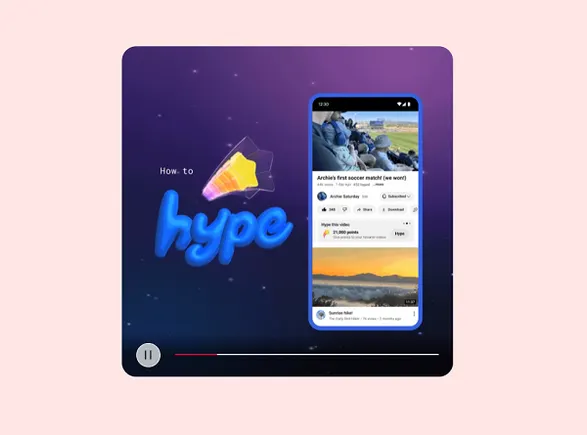Netflix’s ‘Stranger Things’ marketing offers clues to its streaming wars plan
How the streaming giant will look to worldbuilding as a way to regain its footing in an increasingly crowded video landscape.

As fans prepare to return to Hawkins, Indiana, with the upcoming release of the fourth season of “Stranger Things,” arguably one of Netflix’s most anticipated premieres of the last three years, the streaming giant’s approach to world building could provide a road map to how it plans to lean on its marketing machine to remain dominant in an increasingly competitive streaming landscape.
Netflix upended the TV model when it began rolling out its own original content a decade ago. But what had previously made it an existential threat to TV incumbents, has become commonplace, as mega-brands like Disney, Warner Bros. Discovery and NBCUniversal create streaming destinations with their own vast content libraries. And now, Netflix finds itself facing down a veritable army of competitively priced streaming rivals armed with decades worth of fan-favorite franchises as well as fresh originals—not to mention the myriad other platforms Netflix competes against.
RSVP for Ad Age In-Depth: TV Pivot on May 24 and 25 at AdAge.com/TVPivot
“The competition is for attention, and FASTs [free ad-supported streaming] and YouTube are making a strong play for audiences now,” said Andrew A. Rosen, a former Viacom digital media executive and founder of consulting firm Parqor.
As Netflix is thinking about its business strategy moving into its second decade in the original content business, it's also facing new challenges. The company recently reported a subscriber loss for the first time in roughly 10 years following a prolonged period of slowed growth. In order to continue growing its subscriber base, Netflix has begun experimenting with ways to crack down on password-sharing. And after years of publicly balking at the idea of ads on its service, Netflix is gearing up to introduce a cheaper ad-supported model that could arrive as soon as the end of this year.
At the same time, Netflix is nearing the end of the run of what is, by many metrics, its most successful title to date. "Stranger Things,” which will release its fourth season in two volumes, on May 27 and July 1, respectively, will be followed by a fifth and final season. While Netflix may very well decide to expand its “Stranger Things” universe to include spin-offs or video games, the supernatural mega-hit has undoubtedly reached a crossroads.
The “Stranger Things” phenomenon—driven primarily by a rabid fan base who can’t seem to get enough of it—has culminated to date in two mobile games; multiple immersive fan experiences; and innumerable brand collaborations. For Netflix, worldbuilding for its biggest franchise titles is something it has been steadily leaning into—and a strategy for which it will need to be decisive and aggressive if it hopes to hold its streaming throne against competitors including Disney, whose own Marvel, Star Wars, and other properties have fostered some of the most dedicated fan followings in history.
“The entertainment industry has been doing this primarily with theatrical motion pictures for decades,” said Eric Frankel, a former Warner Bros. TV executive who now runs marketing company AdGreetz, a marketing services company. “It's only brand new, I would argue, in the streaming business because we haven't seen a lot of this yet.”
To be sure, Netflix has developed mega-hits beyond the “Stranger Things” universe—particularly in “Bridgerton” and “The Witcher,” each of which had fervent communities in place prior to their adaptations at Netflix. But “Stranger Things,” the third season of which ranks number three on Netflix’s list of most popular English-language TV shows, is a master class for how the company should be driving fanfare around its biggest releases moving forward—particularly up against legacy industry Goliaths who’ve been in the TV and movie hype-machine business for longer than Netflix has existed.
Building the ultimate fan experience
Experiences, merchandise and video games create additional avenues for world building around Netflix’s most fan-driven franchises, said Josh Simon, VP of consumer products at Netflix, particularly when a show is out of season. The third season of “Stranger Things” premiered in 2019, and a nearly three-year hiatus—the series faced production interruptions during the pandemic—meant that Netflix needed to be strategic in serving the show’s enthusiast fan base ahead of the fourth installment of the series.
In fall of 2020, Netflix unveiled its interactive Stranger Things: Drive Into Experience, which allowed fans to experience themed snapshots of Hawkins during an hour-long drive-thru performance staged in a 500,000-square-foot outdoor parking garage. The production ran for about seven months, which was extended due to demand, Simon said. This past fall, the company launched two retail pop-ups, and earlier this month, it introduced its new Stranger Things experience in New York, which allows fans to explore the Hawkins Plaza and Laboratory and even venture into the Upside Down, the perilous, demon-infested alternate dimension wreaking havoc on the fictional Indiana town central to the series.
Netflix’s retail locations “pretty much operated at capacity for the entire time that those stores were open,” Simon said. Starting this summer, Netflix is planning to roll out more of the retail pop-ups to other cities in the U.S., Europe, and eventually Latin America and Asia. Simon said Netflix is planning to similarly expand the “Stranger Things” experience. Its latest efforts include a virtual concert event slated for June 23 in collaboration with Doritos, which will feature performances by Charli XCX and ’80s rock icons.
“The fandom for the series doesn't stop at the end of a season,” Simon said. “We think they're really meaningful ways for fans to engage in-between seasons.”
In many ways, Netflix looks like it's taking a cue from Disney’s marketing playbook. The Netflix Shop, which launched last year, capitalizes on dozens of popular titles to hawk everything from T-shirts to collectibles to products offered through collaborations with brands like Funko Pop! and even French luxury fashion house Balmain.
“Can anything be smarter than getting consumers to pay money to advertise your programs or your brand?” Frankel said. “It's brilliant if you can get a million people to be wearing a T-shirt for one of your brands and make it hip and make it cool, and make money, or break even—or even lose a nickel on it!”
Collaborations with apparel brand Quiksilver and a beauty line with Mac Cosmetics naturally lent themselves to retail products outside of the series. Amy Forsythe, the makeup department head for “Stranger Things,” is also a Mac makeup artist. That organically led Netflix to develop two makeup lines with the brand, Simon said, one inspired by Hawkins High and another inspired by the Upside Down. Similarly, Simon said “Stranger Things” costume designer Amy Parris worked on a collaboration with Quiksilver for three years, leading to a line from the outfitter that will launch May 27.
“The Quiksilver team went really deep into their archives from the ’80s to help us connect to some authentically inspired apparel that actually comes to life as a wardrobe in the show. They even helped design one of the more iconic costumes for a new character who's associated with a fictional brand called Surfer Boy Pizza,” said Simon. “At the same time, we took inspiration from the show to create a more modern, fashion-forward surfboard line with Quiksilver as well. For us, it really is about how we can more authentically connect storytelling to the products that we create.”
Product placements
While physical products, experiences and marketing tie-ins are core to Netflix’s marketing strategy, product placements play a pivotal role in generating organic cultural moments around Netflix productions (though typically not in the traditional sense of money exchanging hands). Kellogg’s Eggo famously featured heavily in “Stranger Things,” and even appeared in a Super Bowl teaser for the series, despite having paid Netflix nothing for the brand nod.
“By and large, we don't do paid placements. They happen on occasion, but with ‘Stranger Things,’ really it’s all at the discretion of the Duffer Brothers,” said Magno Herran, director of marketing partnerships at Netflix.
Still, brands have wisely capitalized on their presence in the series, perhaps most visibly last season with the limited return of Coca-Cola’s maligned New Coke beverage after it became a topic of debate in the show. Other brands have been brought into the “Stranger Things” fold if they’re able to help the streaming giant market the series in a way that feels authentic to the “Stranger Things” vision. For example, the Doritos virtual event is being marketed as “the greatest concert that never happened.” Pegged to a fictionalized event that does not occur in the show, a tour bus headed to Doritos Music Fest '86 crashes and “musicians disappeared into another dimension,” leading to the cancellation of the show in the “Stranger Things” universe.
“Doritos opened a portal and is now inviting fans to virtually step inside to watch these '80s music icons perform during ‘Live From The Upside Down,’” a press release for the event states. Doritos launched its Cool Ranch flavor the same year the upcoming season of “Stranger Things” takes place. Similarly, playing on key characters and plot points of season four, the company is launching an app with Domino's that will allow users to order pizzas with their “minds” as if they were test subjects of the Hawkins Laboratory. (The app will do this using facial recognition and other gestures.)
Read more: Why Domino's is exploring 'mind-ordering' with 'Stranger Things'
“It really is about trying to find a way to give fans more,” Herran said. “What we're able to do with a franchise like ‘Stranger Things,’ because of that rabid fan base, is really find unique opportunities to connect authentically with the brands themselves and create experiences and pieces of content that will give them an additive experience to the show-watching itself.”
Advertising future
As Netflix begins to close the curtain on its pop culture hit, one of its primary challenges moving forward will be better understanding its users. That’s especially true if it plans to continue taking on competitors like Disney, which is an expert in knowing its audiences and how to market content to drive conversation and create longevity for its brands, said Rosen. While it’s undeniable that Netflix has been able to monetize its brands and IP in ways that it hasn’t before, Rosen said the company has yet to excel at the level of Disney, Warner Bros. Discovery or other companies in the same game.
“Netflix's relationship with its consumers is a blessing and a curse. The blessing is they've done an extraordinary job in taking the past decade-and-a-half to fully understand what the streaming consumer wants globally. And not just a particular subset of streaming consumers, but what does the streaming consumer look like in different countries, in different languages, on different platforms,” Rosen said.
Rosen said he believes the problem that Netflix has faced is that “they don’t really know how to engage audiences outside of the algorithm.” Keeping fans engaged long after they’re done binging the latest season of their favorite TV series and creating more water cooler moments around those franchises is arguably the company’s biggest challenge. That, and hanging on to subscribers as it continues to raise its prices—a problem the company seems to believe will be fixed by introducing ads. Of course, churn is not an issue unique to Netflix. But the company undoubtedly feels the heat as the competition threatens to upset its position as streaming king.
Disney has seen a meteoric rise in its service since its launch in 2019. During its most recent earnings call, the company reported that its marquee streaming service Disney+ finished its second quarter with 137.7 million paid accounts globally. Netflix—which currently has 221.6 million subscribers—lost 200,000 paid subscriptions in its first quarter, and estimates another 2 million subscribers will leave the service during the second quarter. Ads could help improve Netflix’s position in the market with a cheaper ad-supported option.
Enter Ad Age's 40 Under 40 at AdAge.com/40u40.
The company has revealed little about its ad plans and declined to elaborate on comments Hastings made during its recent earnings webcast. But given its history of shielding creative talent from ad placements in its originals, it’s difficult to imagine that Netflix would entertain an interruptive experience. One example of what advertising might look like is NBCUniversal’s use of retro ads for era-specific programming. And seeing a similar ad strategy deployed at Netflix doesn’t seem too far out of the realm of possibility, said Brian Wieser, global president of business intelligence at GroupM. Netflix may very well be looking to its streaming peers for guidance on how to ease into ads, adopting formats that serve ads when a viewer pauses a show for example.
“I think you could reasonably assume anything is possible at this point,” Wieser said. He pointed to HBO Max as a service that has been able to transition from an ad-free streaming product into an ad-supported one. Disney+, which thus far has been ad-free, will introduce an ad tier later this year. However, when Netflix pivots to ads, Rosen said, it may face some growing pains.
“In terms of business strategy, it falls outside of their core competencies and comfort zone,” Rosen said. “I'm not sold that the ad model they are going to market with in Q4 2022 will be the same model in Q4 2024. And I think they are going to quickly fall out of love with haggling with deal-seeking media buyers.”

 KickT
KickT 
































